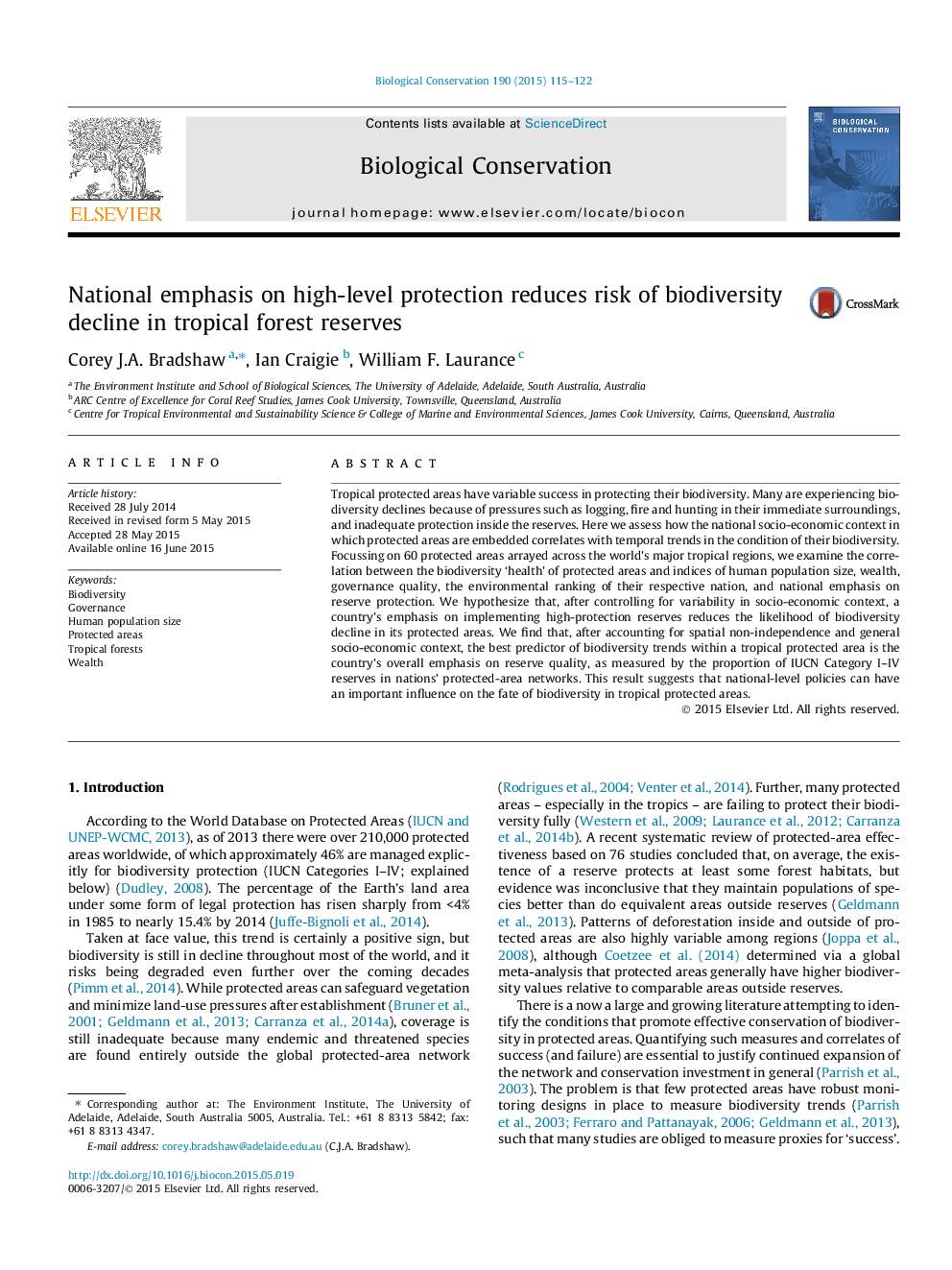| کد مقاله | کد نشریه | سال انتشار | مقاله انگلیسی | نسخه تمام متن |
|---|---|---|---|---|
| 6299138 | 1617911 | 2015 | 8 صفحه PDF | دانلود رایگان |
عنوان انگلیسی مقاله ISI
National emphasis on high-level protection reduces risk of biodiversity decline in tropical forest reserves
ترجمه فارسی عنوان
تاکید ملی بر حفاظت در سطح بالا، خطر کاهش تنوع زیستی در ذخایر جنگلی استوایی را کاهش می دهد
دانلود مقاله + سفارش ترجمه
دانلود مقاله ISI انگلیسی
رایگان برای ایرانیان
کلمات کلیدی
تنوع زیستی، حکومت، اندازه جمعیت انسانی، مناطق حفاظت شده، جنگل های گرمسیری، ثروت،
موضوعات مرتبط
علوم زیستی و بیوفناوری
علوم کشاورزی و بیولوژیک
بوم شناسی، تکامل، رفتار و سامانه شناسی
چکیده انگلیسی
Tropical protected areas have variable success in protecting their biodiversity. Many are experiencing biodiversity declines because of pressures such as logging, fire and hunting in their immediate surroundings, and inadequate protection inside the reserves. Here we assess how the national socio-economic context in which protected areas are embedded correlates with temporal trends in the condition of their biodiversity. Focussing on 60 protected areas arrayed across the world's major tropical regions, we examine the correlation between the biodiversity 'health' of protected areas and indices of human population size, wealth, governance quality, the environmental ranking of their respective nation, and national emphasis on reserve protection. We hypothesize that, after controlling for variability in socio-economic context, a country's emphasis on implementing high-protection reserves reduces the likelihood of biodiversity decline in its protected areas. We find that, after accounting for spatial non-independence and general socio-economic context, the best predictor of biodiversity trends within a tropical protected area is the country's overall emphasis on reserve quality, as measured by the proportion of IUCN Category I-IV reserves in nations' protected-area networks. This result suggests that national-level policies can have an important influence on the fate of biodiversity in tropical protected areas.
ناشر
Database: Elsevier - ScienceDirect (ساینس دایرکت)
Journal: Biological Conservation - Volume 190, October 2015, Pages 115-122
Journal: Biological Conservation - Volume 190, October 2015, Pages 115-122
نویسندگان
Corey J.A. Bradshaw, Ian Craigie, William F. Laurance,
